In the countryside (part one)
Scenes from a rural idyll, or possibly not
It’s something of a cliché—it’s been something of a cliché for centuries, almost—that the English countryside is a haven of natural beauty, a green and pleasant land (to use Blake’s phrase) which is somehow a reservoir of timeless, genuine Englishness.
It’s not true, of course. It’s far from being a green desert, but it’s a strange, deserted place, peaceful due to absence, peaceful because strangers are forever unwelcome. Or am I just seeing it through the lens of folk horror? Nevertheless, whenever I go out for a long country walk, I try to avoid paths that will take me through farmyards and golf courses, because I’m always aware that I’m intruding, there, that I’m a stranger who just doesn’t fit in.
I do, though, still go out for long country walks when the weather is right. I can set out first thing on a Sunday morning and barely see another person other than relatively amiable middle-class hikers and dog-walkers who have driven out to their favourite rural circular walks to get their weekly exercise. All the people who can afford to live in the big houses are still in bed; all the farm workers are sleeping off their Saturday binge hangovers, and the countryside is mine and mine alone, has space for me to intrude in it. I watch swifts and swallows spiralling above catching insects; hares running away up the lane ahead of me; and dozens and hundreds of hedgerow butterflies. I haven’t seen deer yet; I suspect I would have to be up a lot earlier.*
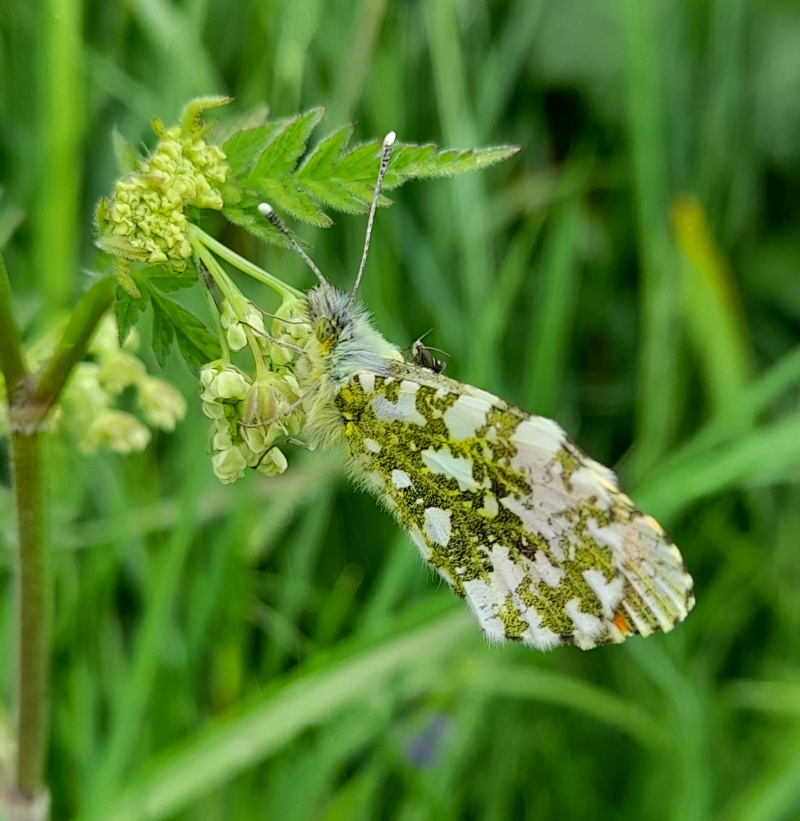
I said the English countryside is a strange, deserted place. It’s a place for the wealthy and the very poor. The process of denudation, of removing the population, has been going on a long time; and Lincolnshire is full of the scars and landforms left behind by deserted villages, the inhabitants evicted centuries ago to turn the landscape into a series of sheep-ranches, the fleeces for export to Brugge.
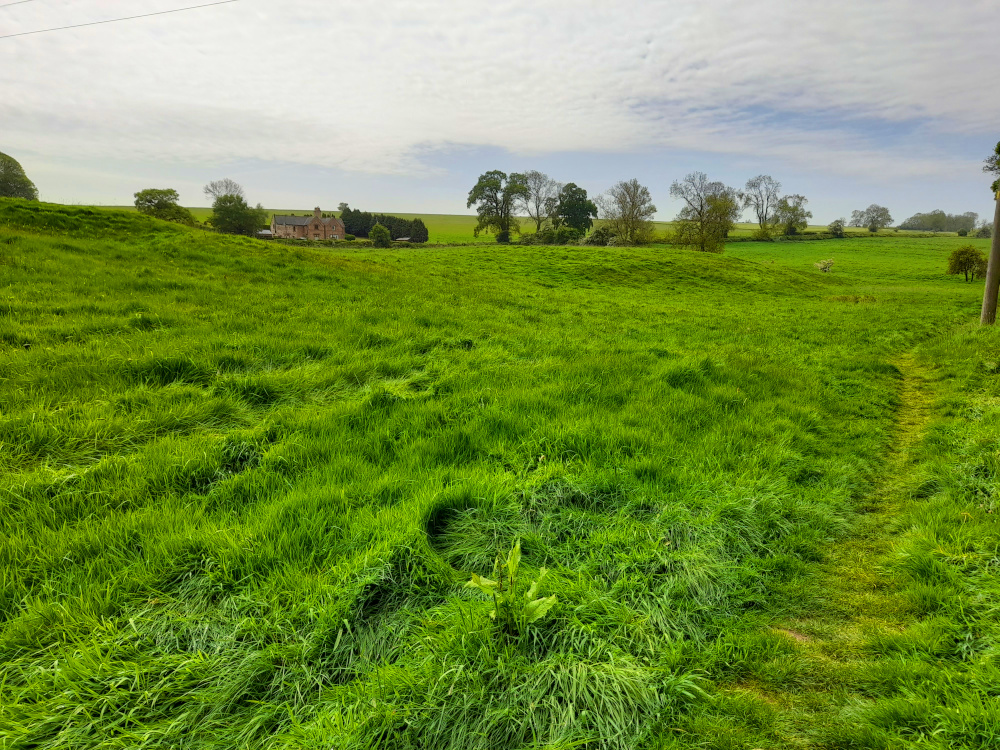
These lumps and bumps are the remains of the village of Beesby, a village which seems to have just gently faded away in the fifteenth and sixteenth centuries. At the edges of the village are its fields.
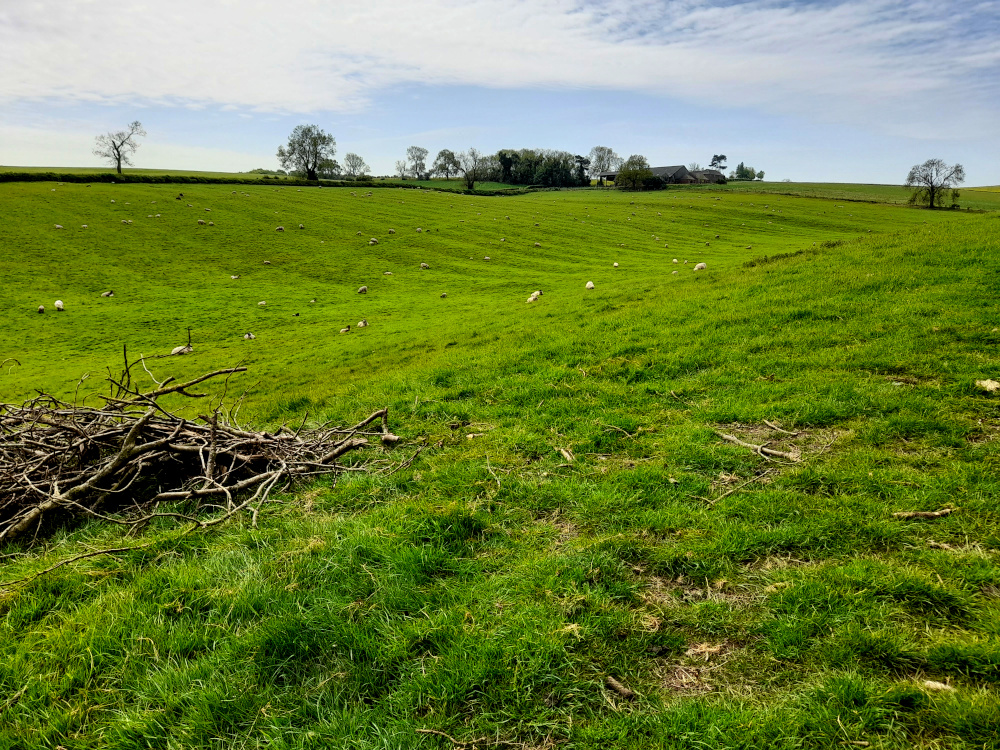
The stripes are the result of six or seven hundred years of digging and planting the fields in the same pattern, each villager having rights to a few widely-scattered strips in the large open field, to give each villager land with a variety of soils and situations. After another four or five hundred years as pasture, the ridges they form are still clearly seen, as the sheep and cattle which have grazed here ever since never let anything grow to a height of more than a few inches. This is no hay-meadow full of flowers.
One reason sheep have been so popular on this land for such a long time, why mile after mile of it was turned over to sheep-ranching, is that the soil here is actually pretty poor, thin stuff. The chalk bedrock is only a foot or so below the surface in most places, and when you do find a ploughed field, its surface will be dappled white with lumps of chalk that have come up for air. If you take an archaeologist on your walk with you, be prepared for it to take a while, because each square foot will have a few flints that are probably natural but, you never know, might not be. Of course you might want to keep your eyes out for other things too; because we know there were Roman villages and villas in the area even if we don’t know exactly where all of them were. The land is dotted with pits, too, little quarries maybe a few hundred yards wide, maybe only tens of yards wide, most of them abandoned, some still worked. The larger ones feel as if you may have strayed onto a horror set.
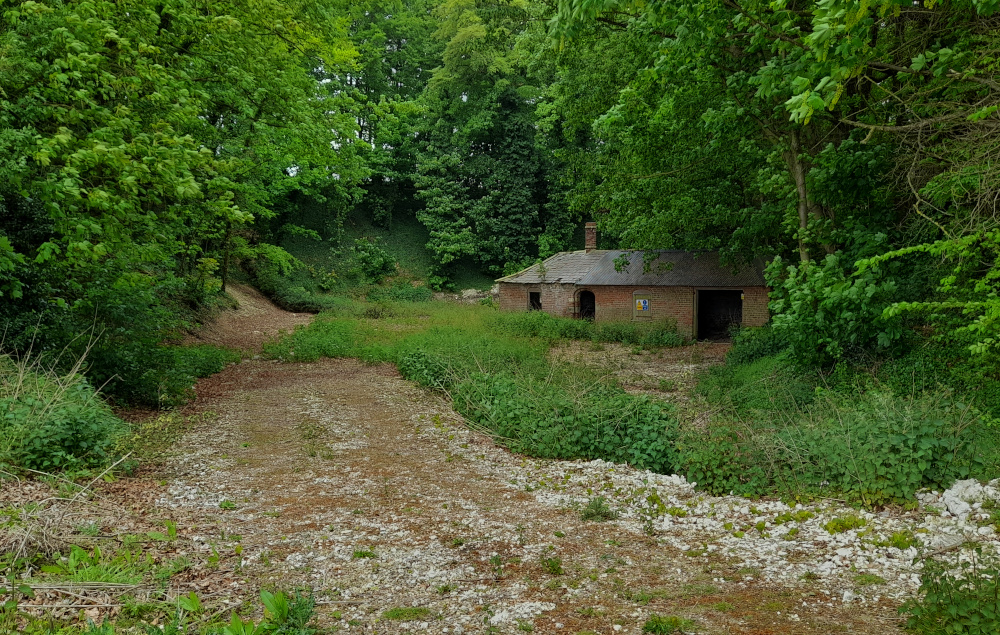
One thing that will grow, though, is Brassica napus, rapeseed, almost six feet tall and eye-wateringly yellow. For me, it’s been a sign of the early summer as far back as I can remember, so it’s strange to think that to people only a few years older than me it was a strange, alien plant when it first became popular with farmers here—British rapeseed production increased by a factor of 20 between 1975 and 1995. Where it almost swamps the path, it can be rough going.
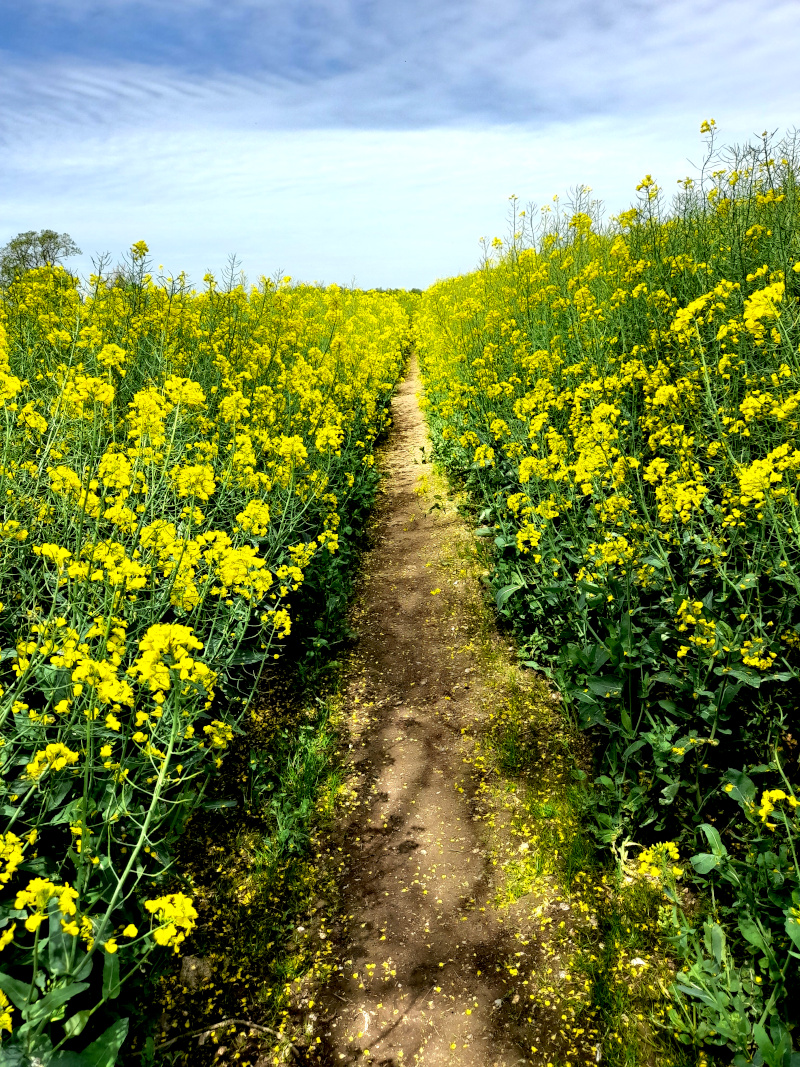
So much for the timeless nature of the countryside. And this, you see, this is the nice parts. I haven’t got on to the pristine, hygienic farmyards, deathly silent on a Sunday. Or the quiet churchyards hiding who knows whatever Jamesian horrors. Or the pile of wood twice my height, waiting for the sacrificial torch. This post is already getting long; think of this as the gentle, friendly, bucolic introduction, with the next act of the film containing all the scares.
* I have seen deer only just outside town, just after dawn, when I’ve been to the beach for a sunrise walk in autumn. In June, sunrise beach walks are just that bit too early for me.

 Home
Home